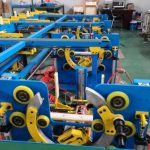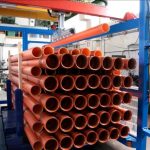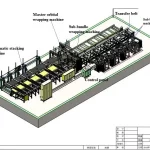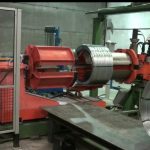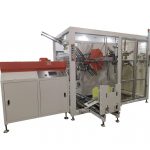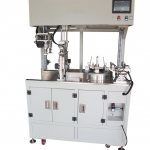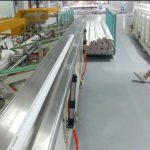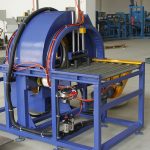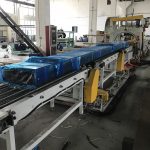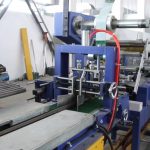https://www.fhopepack.com/Aluminum_wrapping_machine.html
automatic aluminum conveying and bundling machine for cooperating the wrapping machine, ink-jet printing machine, stacking machine of the aluminum sub-bundles.
It is able transfer the bundle one by one.
The automatic aluminum conveying and bundling machine is a type of machine that is used to convey and bundle aluminum sub-bundles for efficient transportation and storage. The machine is typically designed to work in conjunction with other machines, such as an aluminum wrapping machine, ink-jet printing machine, and stacking machine.
The conveying and bundling process is typically initiated by feeding the aluminum sub-bundles onto the in-feed conveyor of the machine. The machine then automatically conveys the sub-bundles to the next machine in the production line, such as the aluminum wrapping machine, and bundles them together for efficient transportation or storage. The machine can transfer the bundles one by one, ensuring an efficient and continuous production line.
Some common features of automatic aluminum conveying and bundling machines include:
- Adjustable bundle size: Many machines allow you to adjust the bundle size to suit the specific requirements of your packaging needs.
- Automatic conveying and bundling: This feature allows the machine to automatically convey the sub-bundles to the next machine in the production line and bundle them together for efficient transportation or storage.
- In-feed conveyor: The in-feed conveyor automatically feeds the sub-bundles onto the machine, allowing for a continuous and efficient production line.
- Variable speed controls: These features allow you to adjust the speed of the conveying and bundling process, which can help ensure a consistent and high-quality result.
- Sturdy construction: Automatic aluminum conveying and bundling machines are designed to be durable and long-lasting, with sturdy construction and high-quality components.
Overall, automatic aluminum conveying and bundling machines can help increase efficiency and productivity in manufacturing and production facilities, by automating the conveying and bundling process and reducing the need for manual labor. They are available in a range of sizes and configurations to suit different sub-bundle sizes and packaging requirements, and can be customized with additional features and options to meet specific needs. The machine you provided the link to appears to be a good option for automatic aluminum conveying and bundling.
